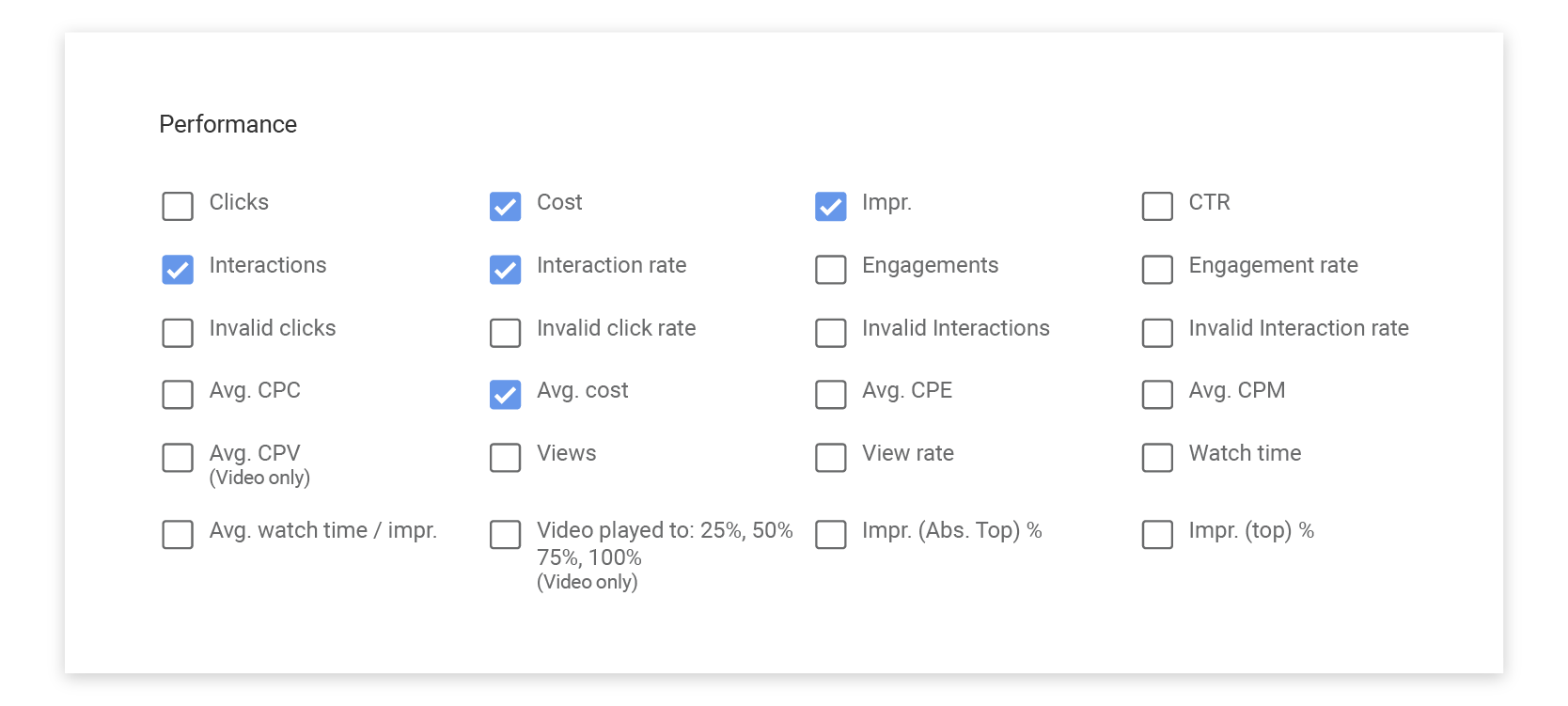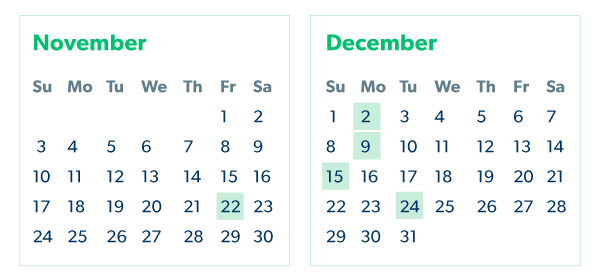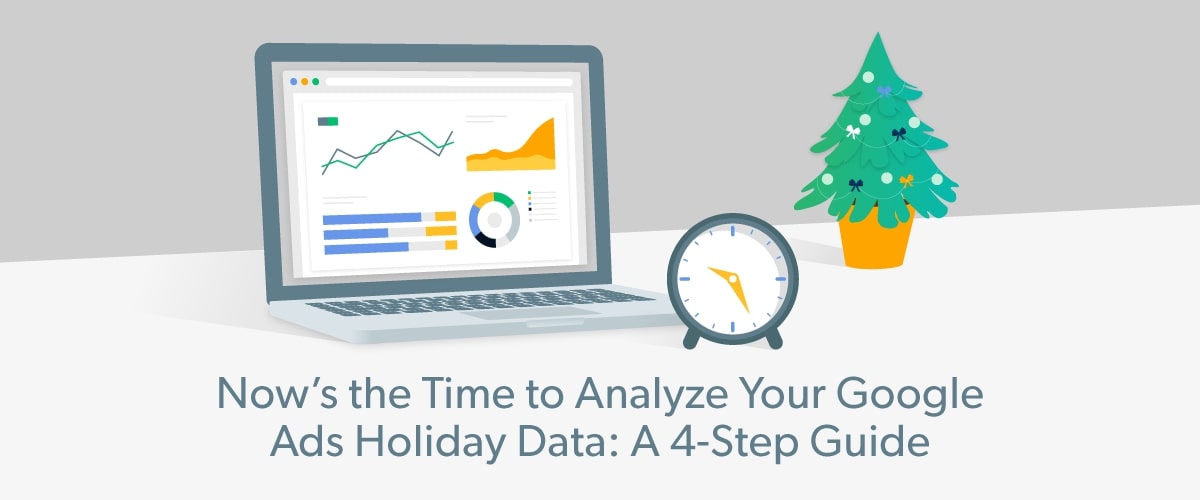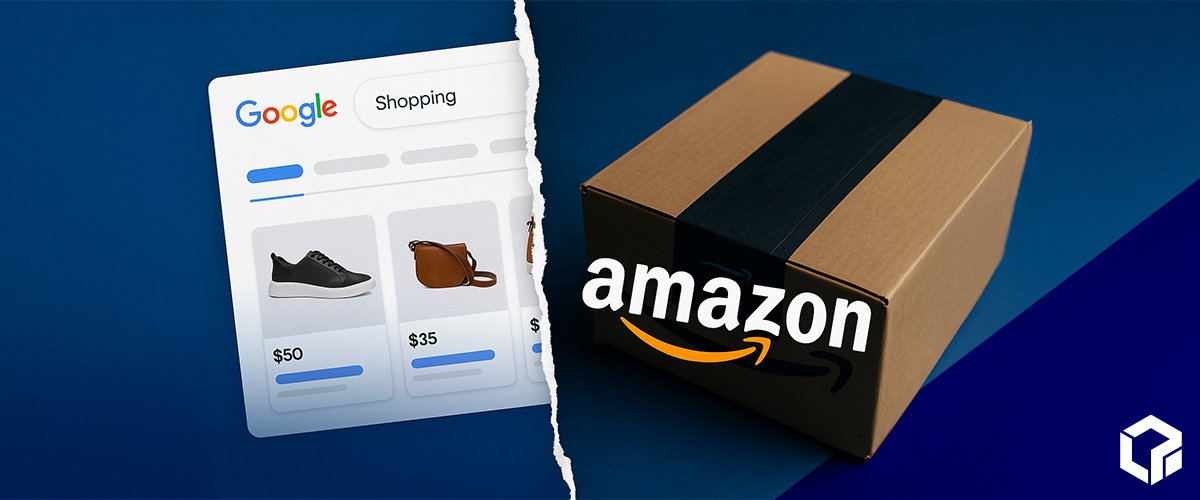The holidays may be a few months out, but now’s the time to determine how well your Google Ads campaigns performed last year. Regardless of how your 2018 holiday season went, understanding the cause and effect of your campaign strategy will guarantee growth in the upcoming holiday season. Analyze past data from Google Ads and Analytics to uncover strengths and weaknesses and construct new, data-driven strategies that will help you stay on track to meet your business goals this year. If you put it off for too long, your ad performance could suffer from a poor game plan and result in a missed opportunity for your business. Diving into old data can be overwhelming if you’re not sure where to start, so we’ve laid out a four-step process to conduct an in-depth holiday analysis that will drive your campaigns forward throughout the year.
1. Select the Right Dates
The first step in the analysis process always starts in Google Analytics. Generate your year-over-year (YOY) comparison by selecting date ranges from 2017 and 2018 that coincide with the holidays.

Make sure you include Black Friday/Cyber Monday (BFCM) in both data sets. Missing key retail dates like these, in either set, could skew your results by appearing to be down YOY when your business may not have been.
When selecting a data range, start with a large data set to identify trends across the entire campaign length. You can then dive deeper to investigate details when certain patterns catch your attention. A great fool-proof starting point is:
 Nov. 1, 2018 — Dec. 31, 2018 vs. Nov. 1, 2017 — Dec. 31, 2017
Nov. 1, 2018 — Dec. 31, 2018 vs. Nov. 1, 2017 — Dec. 31, 2017
Larger data sets allow for more exhaustive performance evaluation, so using the above date ranges will give you ample room to draw tangible comparisons between holiday seasons. Another important reason to look at ad performance over a two-month time span is that it better encapsulates the reality of holiday shoppers, with some who start weeks before BFCM and some who wait till after Dec. 25th to make purchases.
With your date ranges set, the next step is understanding what to look for and how to utilize your findings for this year’s strategy.
2. Make Sense of Your Data
Depending on the industry, what businesses hope to get out of their Google Ads will differ. But in the case of e-commerce companies, for example, all eyes are on revenue. When assessing your data, choose a few key performance indicators (KPI’s) to base your YOY comparisons on.

Looking at metrics like return on ad spend (Google Ads measures this as Con. value / cost), cost per acquisition (CPA), and revenue should give you a sense of how your ads performed during the 2018 holiday season versus the year prior. Other metrics to make special note of are conversion rate (CR) and average order value (AOV). Focusing on a select number of data points will not only give direction to your comparison, but it cuts out all the time you’d spend examining metrics that don’t directly relate to ad performance.
Ask yourself the following questions to jump-start the data analysis process:
- What surprises you about your YOY data?
- How did your data analysis measure up to your actual performance? What patterns do you notice and how might they translate to your campaign strategy?
- Did one year over the other experience any outstanding results? What did you do differently? Write it down.
The most important part of holiday shopping data analysis is getting to the bottom of the success, or lack thereof, your ads saw. Learning from your mistakes and doubling down on what strategies bode well for your business will put your ads in a place that drives more relevant traffic to your site.
3. Prepare for Next Season
To ensure a well-thought-out and put together strategy, you need to get started early, because the earlier you do, the better your holiday shopping season will go. Begin preparing by taking a look at what your strongest and weakest retail days were last holiday season according to your Google Analytics data.
Let’s say your Black Friday ads performed well, but sales on Cyber Monday lagged. Learn from your successes by adapting your Black Friday ad strategy to aggressively pursue online shoppers next Cyber Monday. Emulate tactics you already know will bring in business to improve future ad performance.

Another way to get ready for the impending holiday season is by cracking open a calendar and making note of important retail dates and how they might affect business. The fact that Thanksgiving is set for Nov. 28th this year should come as a big red flag. Since Cyber Monday coincides with the first weekday of December, falling on the 2nd, you can expect to see more than the usual amount of e-commerce traffic on this day. Make sure you’re taking the following days into account:
- Friday, November 29th (Black Friday)
- Monday, December 2nd (Cyber Monday)
- Monday, December 9th (Green Monday)
- Sunday, December 22nd (First night of Hanukkah)
- Wednesday, December 25th (Christmas Day)
- Tuesday, December 31st (New Years Eve)
Additionally, you ought to determine what your guaranteed shipping cutoff date will be this year. Considering Dec. 25th is on a Wednesday this year, you might want to think about making that date the 19th or the 20th. Because your guaranteed shipping cutoff date is completely dependent on your business’ individual order fulfillment capacity, that date may be even earlier than the 19th. In any case, err on the side of caution to avoid dissatisfied customers.
Emulate tactics you already know will bring in business to improve future ad performance.
Getting ready for the next holiday season doesn’t mean you have to block out a whole day to get everything in order. Instead, break up the work and do a little bit every day for the next few weeks or so. For example, you could do a KPI comparison every other day for a week, taking current trends into account, before deciding on your strategy.
4. Stay on Top of Trends
The most effective digital marketing strategies vary from year-to-year, so doing what you can to stay up to date on trending techniques is a must. Regularly checking in with websites like Search Engine Land and Ad Age will keep you informed of any breakthroughs in e-commerce marketing. In addition to current trends, there are certain evergreen tactics you can use next holiday season to see improved results compared to years past.
Black friday/cyber monday sales
One of the best ways to increase sales next holiday season is by running special promotions. BFCM are notoriously great days to score deals at retail shops, both online and in-store, across the country. There’s a reason BFCM are always the two biggest retail days of the year—deep discounts and sales do wonders for bringing in traffic that is ready to convert. Any discount you can offer online shoppers will increase the likelihood that online shoppers visit your website and make a purchase.
Promotions and Discounts
If your margins allow it, you should seriously consider implementing Merchant Promotions for specific products on your Shopping Ads. These discounts are eye-catching and will likely result in more sales than you would have made otherwise. Promotion Extensions on Search Ads could bring similar results by convincing searchers to click on your ads over one of your competitors’.

Additionally, take into account the feasibility of other special deals, like storewide discounts or free shipping. Shopify cites these discounts (storewide discounts, product discounts, and free shipping) as three of the top five most effective holiday offers, according to data collected from shoppers. If you are employing Promotion Extensions on your Search Ads, make sure your special offer details are correct and mirror the language you use elsewhere. There are also advanced options you can use to set the dates and times your Promotion Extensions can show.
Social media/email marketing campaigns
Whatever you decide on, do yourself a favor by driving awareness to your special holiday deals across all your marketing platforms. From ad copy to social media posts, it’s important to keep your marketing messaging consistent. When promoting special offers, the key to a successful campaign is being persistent in your marketing push leading up to and during the promotional period. Utilize email lists and your social media following to build buzz surrounding your BFCM sales. By making your customers excited about upcoming sales through social media and email marketing channels, you can end up selling more products than you ever could have expected.
Since it’s impossible to predict exactly how your business will perform over the holiday season, it’s imperative that you have a backup plan, (or two), ready to go if your BFCM isn’t as lucrative as you anticipated. The week following Thanksgiving is huge for online retail sales, so having additional discounts for those days prepped and ready to go would be wise. Furthermore, a last-minute sale leading up to your guaranteed shipping cutoff date could do the trick as well. No one wants to see disappointing returns this holiday season, so do yourself a favor and have a few alternative gameplans thought out before November comes.

Ready to See Better Results?
To make the most of your 2019 holiday season, you need to set aside time to look over last year’s results and determine areas where you’d like to see improvement. Even if you saw great returns, there are always ways you can fine-tune your digital marketing strategy. Analyzing your holiday season ad performance will give you the perspective you need to determine what goals your business will pursue this year. The data collected in your Google Analytics and Ads accounts is a goldmine of knowledge waiting to be utilized. Don’t be satisfied with more of the same when it comes to your PPC returns. Make this year the year you start to see improvement in your Google Ads performance by devising a bulletproof holiday shopping strategy.

Logical Position, an Inc. 500 digital agency supporting 5,000+ clients across North America. LP is the proud recipient of Google’s Lead Generation Premier Partner of the Year and Microsoft's Global Channel Partner of the Year 2024! The award-winning agency offers full-service PPC management, SEO, Paid Social, Amazon and Creative Services for businesses large and small. As a Google Premier Partner, Microsoft Elite Partner & Meta Business Partner, LP is in the top 1% of ad spend managed across platforms.




